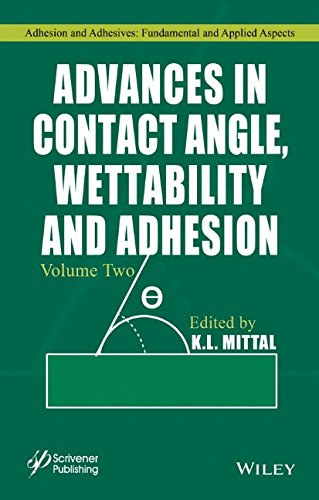

Most ebook files are in PDF format, so you can easily read them using various software such as Foxit Reader or directly on the Google Chrome browser.
Some ebook files are released by publishers in other formats such as .awz, .mobi, .epub, .fb2, etc. You may need to install specific software to read these formats on mobile/PC, such as Calibre.
Please read the tutorial at this link: https://ebookbell.com/faq
We offer FREE conversion to the popular formats you request; however, this may take some time. Therefore, right after payment, please email us, and we will try to provide the service as quickly as possible.
For some exceptional file formats or broken links (if any), please refrain from opening any disputes. Instead, email us first, and we will try to assist within a maximum of 6 hours.
EbookBell Team

4.1
90 reviewsThis book is the second volume in the series "Contact Angle, Wettability and Adhesion." The premier volume was published in 2013.
Even a cursory glance at the literature show that in recent years the interest in understanding and controlling wetting behavior has grown exponentially. Currently, there is tremendous research activity in rendering surfaces superhydrophobic, superhydrophilic, superoleophobic, superoleophilic, omniphobic and omniphilic because of their applications in many technologically important fields. Also the durability or robustness of materials with such super" characteristics is extremely significant, as well as the utilization of "green" (biobased) materials to obtain such surfaces.
This book containing 19 articles reflects more recent developments in certain areas covered in its predecessor volume as well as it includes some topics which were not covered before. Concomitantly, this book provides a medium to keep abreast of the latest research activity and developments in the arena of contact angle, wettability and adhesion.
The topics discussed include: Understanding of wetting hysteresis; fabrication of superhydrophobic materials; plasma treatment to achieve superhydrophilic surfaces; highly liquid repellent textiles; modification of paper surfaces to control liquid wetting and adhesion; Cheerios effect and its control; engineering materials with superwettability; laser ablation to create micro/nano-patterned surfaces; liquid repellent amorphous carbon nanoparticle networks; mechanical durability of liquid repellent surfaces; wetting of solid walls and spontaneous capillary flow; relationship between roughness and oleophilicity; superhydrophobic and superoleophobic green materials; computational analysis of wetting on hydrophobic surfaces: application to self-cleaning mechanisms; bubble adhesion to superhydrophilic surfaces; surface free energy of superhydrophobic materials; and role of surface free energy in pharmaceutical tablet tensile strength.